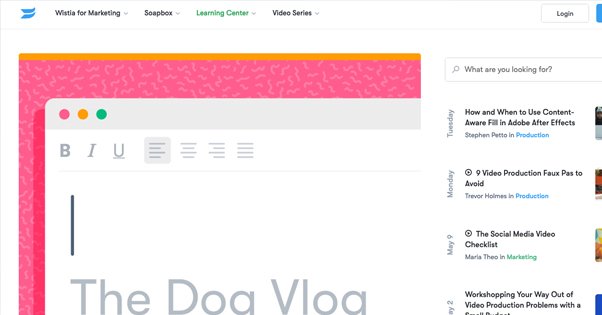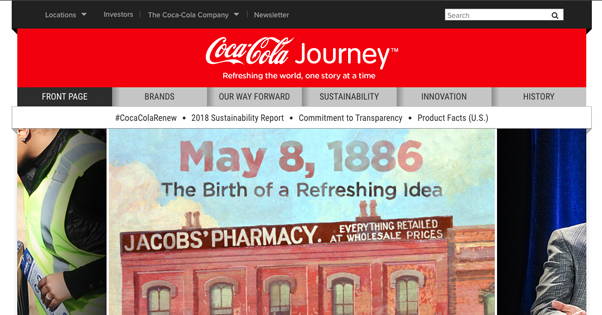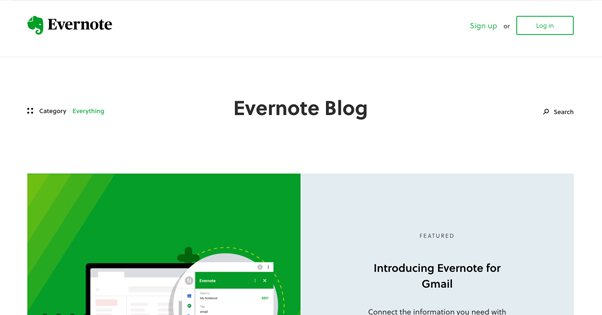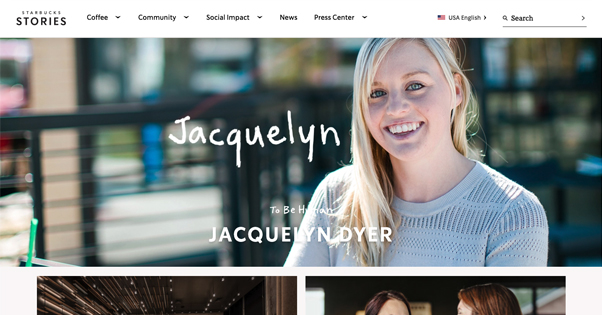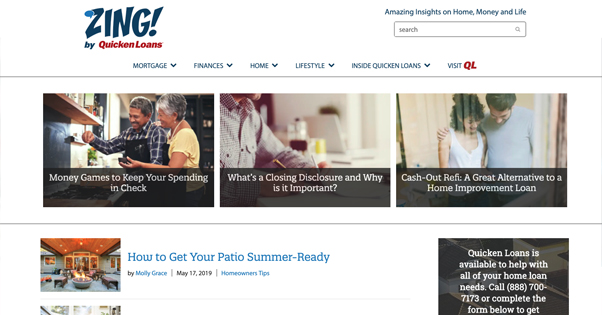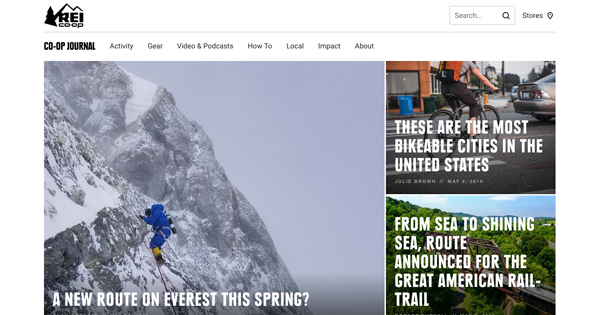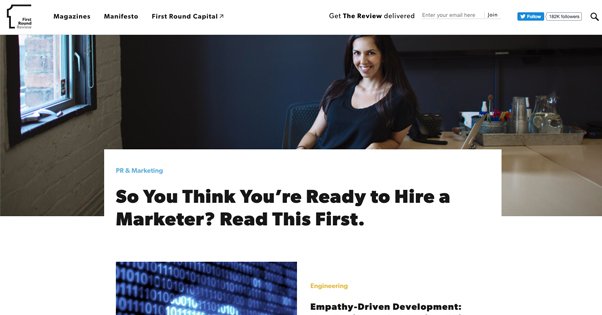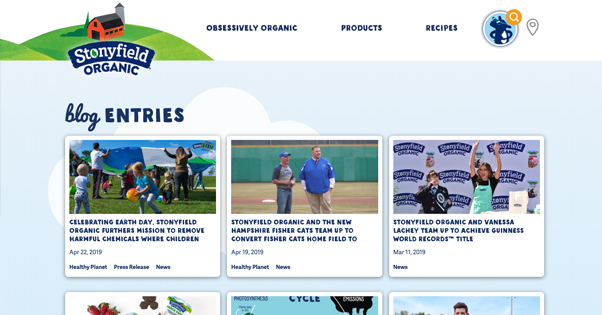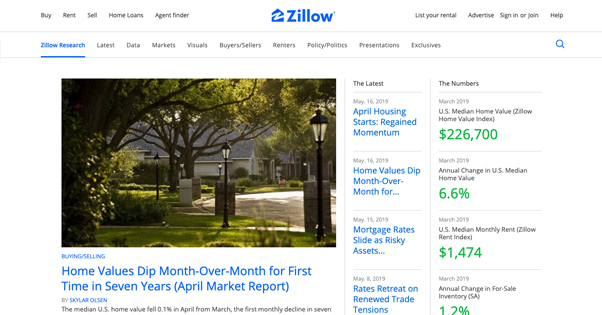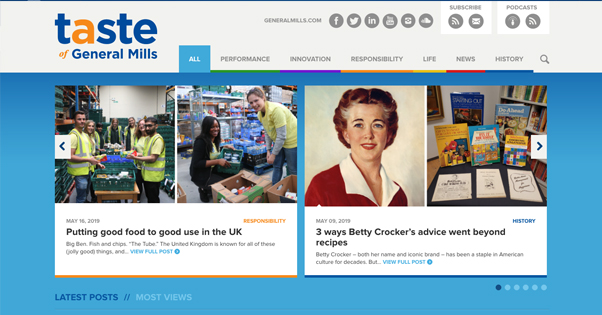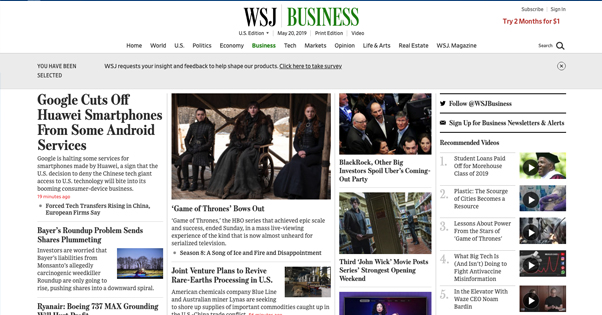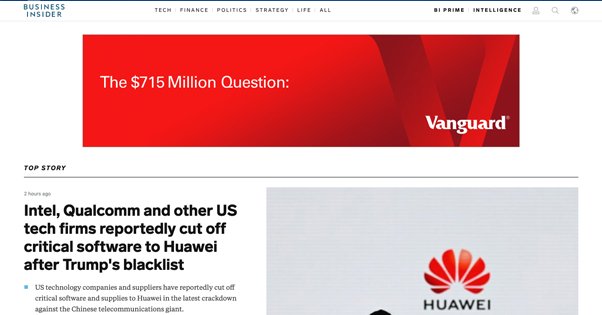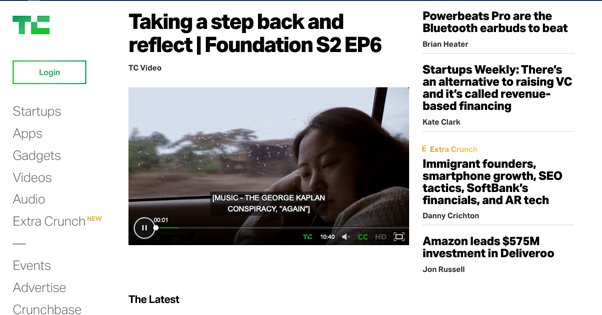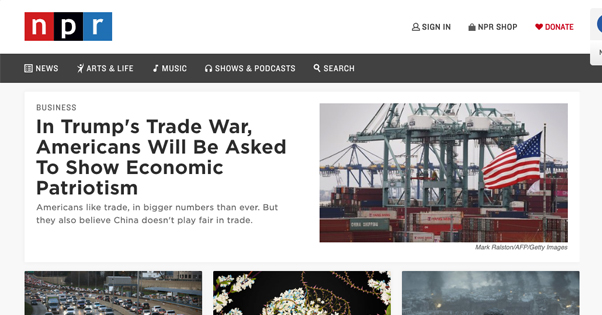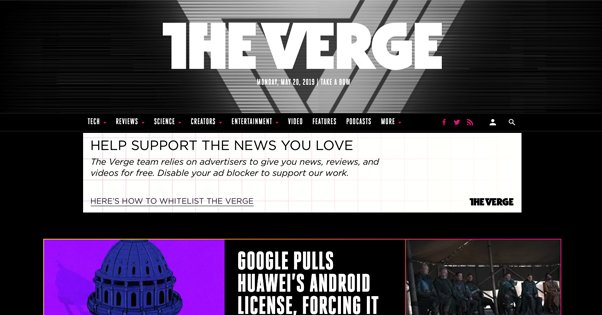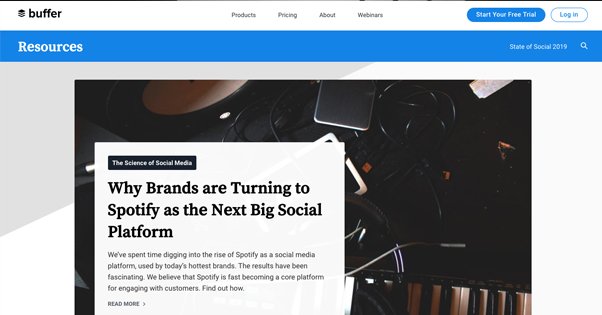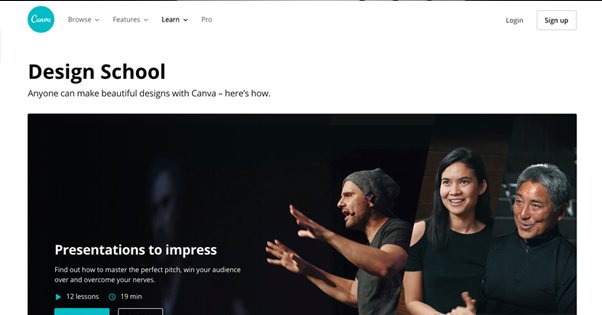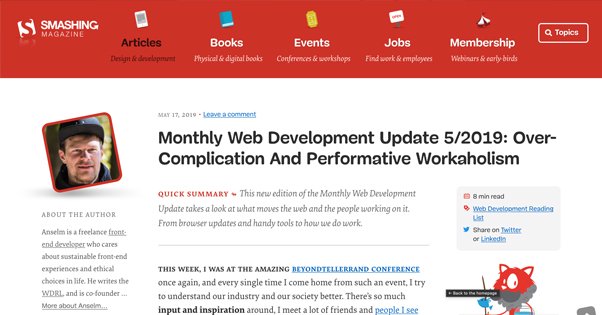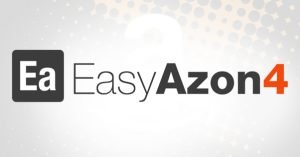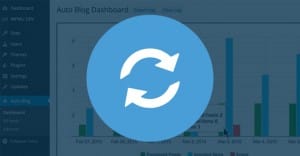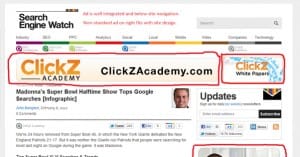20 Examples of Corporate Blogs and to Learn From Them
Published by James Parsons • Resources • Posted May 20, 2019 ContentPowered.com
ContentPowered.com
Blogging for business is an essential way to build and grow a presence in the digital age, but all too often businesses put it on the back burner. After all, it’s a long and slow technique, one that can take years before it brings any solid return on the investment. It’s easy to decide it isn’t worth effort beyond simple maintenance and the occasional blog post. Worst, it’s easy to adopt that mindset before you begin; you throw up a template WordPress blog with a few boring posts and call it a day.
If you need some inspiration – or even just an idea of what’s possible in the wide world of the internet – here are 20 examples of corporate and business blogs that stand out from the pack.
1. Wistia
Wistia shows how you can manage a multi-author blog with different distinct channels, giving every reader a range of possible content they can enjoy. They include product-focused content and more general marketing content to help educate readers. Near the bottom, they also have a robust selection of tags for new users to browse to see what the blog contains.
Key takeaway: A blog with many authors doesn’t need to be cluttered, and a blog with multiple channels can still be clearly organized.
2. Coke
Coca-Cola used to have several blogs, but they merged them all into this one central hub. Their design is cramped, but they use subtle soda imagery, like “just poured” for their newest posts. It comes across as a fairly dense magazine showcasing a wide variety of topics, ranging from investor-focused profit recaps to nutrition breakdowns to discussions of sustainability and upcoming products.
Key takeaway: It’s always a good idea to bring subtle elements of your brand to the table whenever possible.
3. Evernote
Evernote is a productivity app, and their blog supports their mission of bringing productivity-enhancing features to their audience. They have discussions of their own product and developments, of course, but they also cover a variety of related topics. They have articles about other apps that can be used in conjunction with their own, as well as more general articles with tips on how to organize your life.
Key takeaway: A good portion of your blog should be generic topics of value to your readers.
4. Starbucks Stories
Starbucks has a blog, but it’s not necessarily the kind of blog you would expect to see. Very little of their blog is about coffee or about their company or their products. Rather, they know their audience, and they know the concerns of the people who follow them. Thus, large portions of their blog are concerned with ethical sourcing for their coffee beans, content about international politics and most importantly, the documentaries they’ve funded.
Key takeaway: There’s more to your brand than just selling products. Where are you getting involved, and how can you showcase it?
5. Zing by Quicken
Quicken Loans is a financial company, and as such, their blog covers a wide variety of financial topics. These are all topics of great concern to the people who may be reading; everything from tax bracket rates to home renovations that can add value. They make a few goofy attempts to be timely and relevant – “Game of Loans”, really? – but for the most part they just stick to information.
Key takeaway: Providing valuable information to your audience makes that audience trust you more, which is important when your product is a rare sell.
6. REI
REI, at first glance, seems like it should be a blog all about camping, but there’s a lot more to it than that. They cover basically everything you would want to know about an outdoor and active lifestyle, from product reviews to skill learning to packing checklists. The best part of the blog, however, is just how visual it is. Every article is accompanied by a large thumbnail showcasing the general topic, and they have well-produced and high quality videos down below.
Key takeaway: Even something as simple as a few large images can make your blog really stand out.
7. First Round Review
First round Review is a brand focusing on raising funding in the first round, primarily aimed at new businesses. Their blog covers a variety of different yet relevant topics, ranging from why startups fail to questions that drive growth. The real power of the blog, however, is in their depth. Everything they publish is a deep dive into a topic, Thousands of words of great advice far beyond what many other blogs are willing to deliver.
Key takeaway: Long-form content may be difficult and time consuming to produce, but it brings in serious results.
8. Stonyfield
Stonyfield is an organic yogurt company, and their content reflects the interests you would expect them to have. They celebrate earth day, they cover local issues, they talk about what they fund, and of course they give you ideas on how to use their yogurts. The key to this blog, though, is their design. It’s simply, and yet fits their brand image perfectly, with light colors and cheerful graphic design.
Key takeaway: Bring your brand into your design; a custom design will last years and will build a memorable image for your readers.
9. Zillow
Zillow Research is a simple, no-frills blog that doesn’t try to be cute or tricky with their content. They’re a real estate company and they deliver information about real estate issues, ranging from the effects of the housing crisis to data about HVAC costs. It sounds boring, and it can be, but that’s fine. No one reads Zillow’s blog because they’re passionate about the topic, they read it to learn about specific issues while they’re in the process of buying a home.
Key takeaway: Know what you’re providing, and why people are coming to read it. You don’t need anything else, as long as you satisfy that need.
10. PGA Tour
The golf association here has three blogs controlled by tabs at the top: the equipment report, the stats report, and the style report. All three of them are narrowly focused on their topics, but they’re broad within them. Equipment covers everything from new product releases to personal stories from players about their equipment. Stats is more what you would expect, with stats and win predictions for the math inclined. Style approaches their events as pageants and discusses individual outfits and product lines.
Key takeaway: When there are several verticals you can cover, don’t be afraid to cover them all.
11. General Mills
This cereal company’s website will look familiar if you’ve looked at some of the above entries. Rather than talking about cereal or their brand directly, they talk about their global responsibility, research into farming, and more. What you don’t see is anything throwing their legion of cereal mascots in your face. They recognize the mascots are for their children audience, while their blog is for adults.
Key takeaway: As your brand grows, so too does your responsibility to the world you live in.
12. The Wall Street Journal
WSJ is one of the first and foremost examples of function over form. They’re a newspaper, and they’re here to deliver the news. Rather than adapt to the blogging world, they’ve warped the blogging world around them. Their homepage looks like a newspaper, with plenty of dense stories to read, with a wide range of topics to discover.
Key takeaway: When your content is purposeful, you don’t need to worry about making your site look pretty.
13. Business Insider
Business Insider covers business, yes, but they cover more than that as well. Click through and scroll down their homepage, and you’ll see plenty of business news and global political coverage, but you’ll also see lighthearted content like “the top Netflix shows of the week” and “Hey check out this Google easter egg making the rounds.”
Key takeaway: Even if your topic is serious, you don’t need to be serious 100% of the time.
14. Tech Crunch
One of the main differences between TechCrunch and other blogs is in the layout. For years now, the tradition has been navigation across the top bar, with perhaps some sub-navigation along a side, but TC flips that end-ways and puts their navigation on the side. It’s also a very nice design for modern devices, with large fonts making it very easy to read.
Key takeaway: Always consider usability, and don’t keep yourself beholden to what everyone else is doing.
15. NPR
NPR is the National Public Radio network, and there’s not a lot that makes this blog unique compared to other major news sites, except a widget a bit down their front page. Based on your geographic location, the site detects any local NPR stations and asks if you would like to set one as your favorite. This is an easy and up-front way to offer personalized and locally relevant news.
Key takeaway: Once you’re national, it’s worthwhile to look local.
16. The Verge
The Verge is a blog about tech and pop culture, and they’ve set their design in that direction. The immediate presence of a dark background makes it much more pleasant to read, while giving it a more futuristic feel. They drop the design a bit further down the page, which his a bit of a disappointment, but it does present a clear division between their high-tier stories and the below-the-fold content they have on offer.
Key takeaway: Be bold with your design, so long as it’s still accessible.
17. Hubspot
Hubspot has taking scaling their site to new heights. Over time, their blog has grown from one focused blog to three, and now to four, all interconnected and yet still relevant to their audience at large. When you’re a dominant force in a niche, you don’t need to worry about micro-optimizations when pumping out more and more content can have much better returns.
Key takeaway: Don’t be afraid to grow.
18. Buffer
There’s nothing in the design that makes Buffer’s blog stand out. What stands out is the sheer quality of their content. They don’t just build case studies, they put their money where their mouth is. Every single post they publish has the potential to be a heavily cited source for dozens of other posts around the web, building a tremendous amount of credibility, not to mention links.
Key takeaway: The value of the content you provide is perhaps the most important element of all.
19. Canva
Canva’s Design School is a very stylish blog that focuses every single blog post on helping you make better use of their tools. Since Canva is a service provider, they really want your business, and they want you to be able to use their tool to the best of your abilities. They take common questions and concerns and turn them into tutorials, making heavy use of user requests.
Key takeaway: When you provide a service, giving your users additional free resources is an excellent way to keep them around.
20. Smashing Magazine
Like the WSJ, Smashing is a company that takes their origin as a magazine and uses it to inform their design. Unlike WSJ, they use that to bring as much style as they can to their digital pages. They make as much use of their screen real estate as they can, while keeping clever graphic design around at all times.
Key takeaway: Be bold, be creative, and don’t let anyone get in your way.

